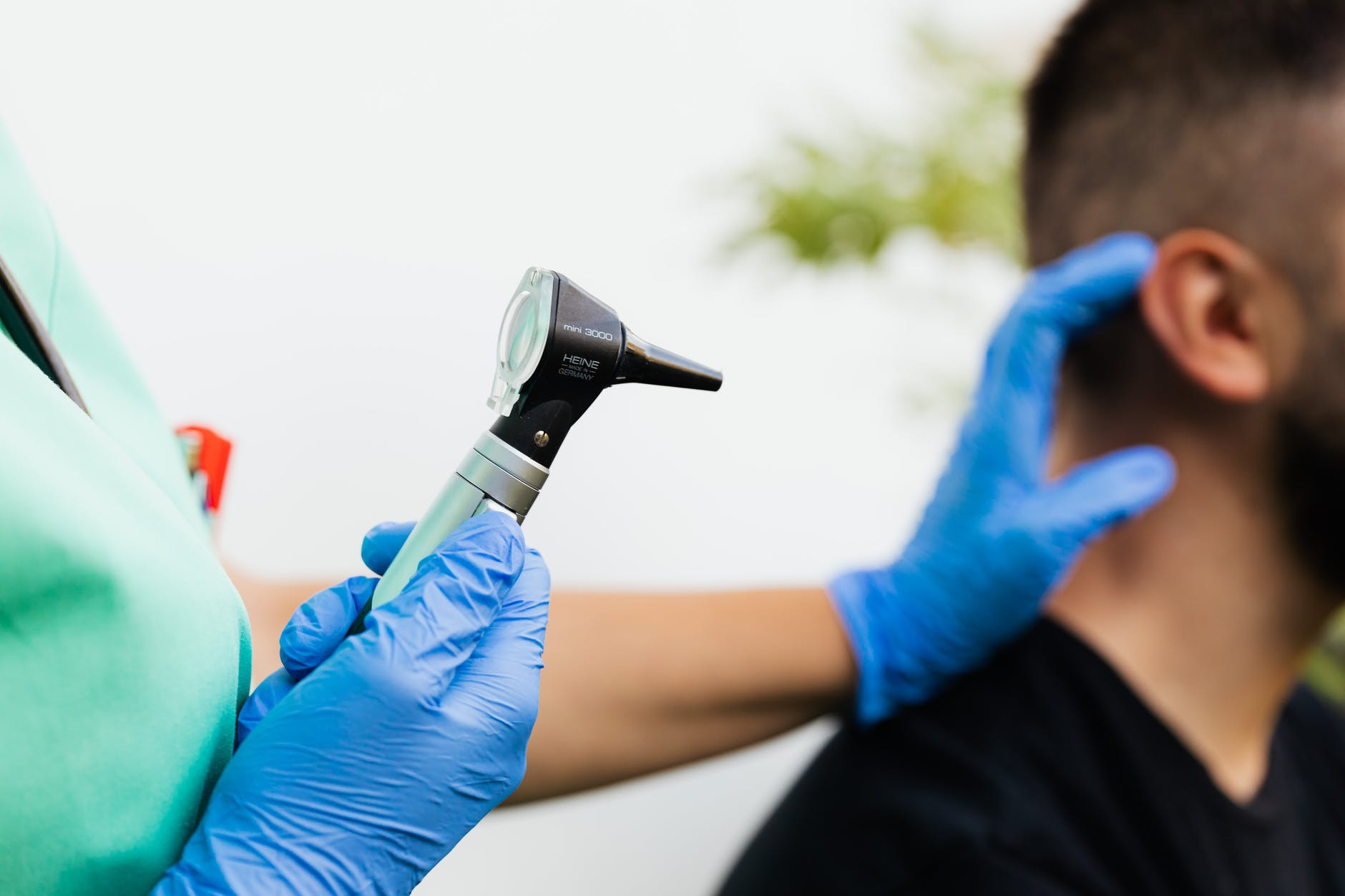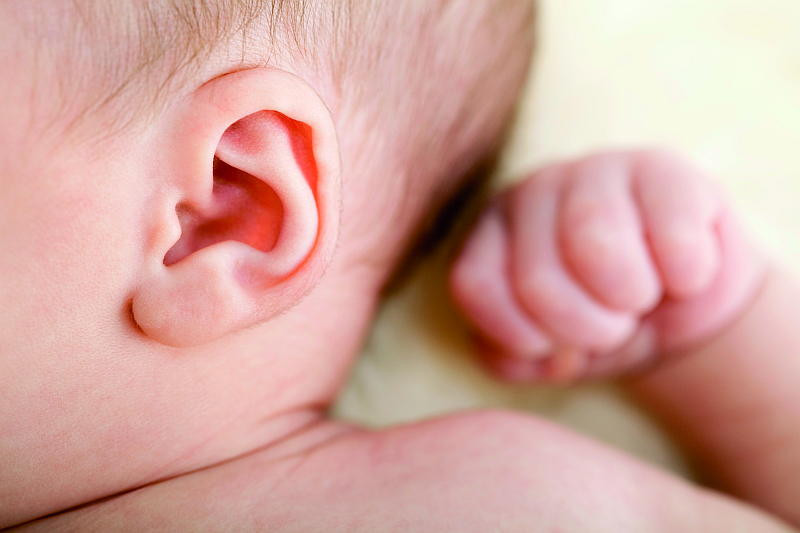Definition
The foreign body in the ear refers to any object lodged in the outer ear or ear canal. The ear canal is the most frequent site for such occurrences, particularly in children. Other common sites for foreign objects include the nose, throat, esophagus, and lower respiratory tract. Among adults, foreign bodies in the throat are most frequently encountered.
Foreign bodies in the ear can cause pain, infection, and hearing impairment. While adults are usually aware of the presence of a foreign object in their ears, young children often remain unaware.
Causes
Commonly removed objects in clinical settings include beads (the most common object), paper, tissue, earrings, toys, stones, insects, and seeds. Although this condition is more prevalent in children, adults can also experience foreign bodies in the ear, commonly involving insects, hearing aids, and cotton swabs.
Risk factor
Foreign bodies in the ear are more common to children. The higher incidence of cases in children can be attributed to their curiosity and tendency to experiment by inserting objects into their ear canals, nostrils, and mouths. Additionally, a child's ear canal is almost straight. By age nine, the ear canal reaches its adult size, approximately 2.5 cm in length.
Symptoms
Symptoms of a foreign body in the ear include:
- Ear pain, along with discharge of fluid or blood, especially if the object has injured the ear canal or eardrum or if attempts have been made to remove the object
- Significant discomfort, nausea, and vomiting if live insects are present, as they tend to move and may sting, causing injury to the ear canal
- A sensation of fullness in the ear
- Decreased hearing ability
- Continuous coughing or burping, which is rare but can occur due to the connection between the ear and the throat, leading to throat irritation and subsequent coughing
Diagnosis
The presence of a foreign object in the ear can often be identified based on a patient's history of inserting an object, particularly in adults who are typically aware of the incident. However, elderly individuals may also be unaware of foreign objects entering their ear, a common example being hearing aid batteries. Depending on their age, children might also recognize an object's presence.
Doctors could utilize an otoscope to examine the ear. This instrument is inserted into the ear canal to assess the ear canal and eardrum condition and to identify larger foreign objects. The otoscope also functions as a magnifying loop, allowing the doctor to evaluate any potential damage to the ear canal or eardrum and to determine the type, location, shape, and size of the foreign object, which guides the appropriate course of action.
Audiometric tests or a tuning fork may be employed if hearing loss is suspected to assess hearing function.
Management
If an object is lodged in your ear, there are several home remedies you can try:
- Do not attempt to remove the object with tools like cotton swabs or tweezers, as these tools can inadvertently push the object further into the ear.
- Remove visible objects. If the object is clearly visible and can be grasped easily with tweezers, you could attempt to pull it gently.
- Try to tilt your head towards the affected ear and let gravity assist in dislodging the object.
- Use oil for insects. If the foreign object is an insect, tilt your head towards the unaffected ear and drip warm (body temperature) oil into the ear to float the insect out. The oil should be warm and not scorching hot. Do not use oil to remove objects other than insects because some objects could cause a corrosive reaction if mixed with oil. Avoid using this method if you have ear tubes or a perforated eardrum. Signs of a perforated eardrum include pain and discharge of fluid or blood from the ear.
- You can try flushing the ear using a syringe and warm water to dislodge the object. Ensure the water is warm enough, not too hot or cold, to avoid vertigo, nausea, or vomiting. This method should not be used if you have ear tubes or a perforated eardrum. If you are uncertain about the condition of your eardrum, avoid flushing water into your ear.
If you successfully remove the foreign object, monitor your hearing. If you experience decreased hearing, ear pain, or fluid discharge, consult a doctor to check for any middle ear or eardrum injury.
Most inorganic foreign objects do not require immediate removal. However, leaving foreign objects in the ear for extended periods can cause swelling, making the removal process more difficult and painful.
There are several medical options for removing foreign objects based on their type, shape, size, location, and the patient's cooperation. These include:
- Using ear instruments
- Flushing water to the ear with a syringe. Doctors can safely flush the ear with water in a medical setting after confirming the eardrum is intact. This procedure cannot be performed in a patient with a ruptured eardrum
- A suction device can be used to extract the object
- Superglue (cyanoacrylate glue) can be applied to the tip of a cotton swab and then attached to the object, pulling it out
- Using oil with or without lidocaine (anesthetic medicine used to anesthetize the ear when insects move around in the ear). For insects, oil can be dripped into the ear, when the insect float and is confirmed to be dead, the insect can be removed
If the foreign object causes significant hearing loss, a referral to an ENT specialist may be necessary for prompt and effective treatment.
Complications
The most common complications arising from ear foreign bodies stem from attempts at removal, which could cause abrasions and injuries to the ear canal's skin. Such wounds increase the risk of infection and inflammation of the cartilage. However, the skin of the ear canal usually heals quickly if kept clean and dry.
Less common but more serious complications include tympanic membrane perforation or ossicle damage.
Prevention
Curiousness and the desire to explore are normal developmental stages in children. Educating children that inserting objects into their ears is harmful can help prevent such incidents. Suppose you suspect your child has placed an object in their ear. In that case, it is important to handle the situation calmly to ensure the object is safely located and removed without complications.
When to see a doctor?
Certain types of foreign objects, such as batteries, require immediate removal. If self-removal methods are ineffective or symptoms such as pain, discharge, hearing loss, or a sensation of blockage occur, it is crucial to consult a healthcare professional.
- dr Ayu Munawaroh, MKK
Foreign object in the ear: First aid. Mayo Clinic. (2022). Retrieved 2 March 2022, from https://www.mayoclinic.org/first-aid/first-aid/basics/art-20056709.
Lotterman, S., & Sohal, M. (2022). Ear Foreign Body Removal. Ncbi.nlm.nih.gov. Retrieved 2 March 2022, from https://www.ncbi.nlm.nih.gov/books/NBK459136/.
Ear Foreign Body Removal in Emergency Medicine: Overview, Clinical Presentation, Differential Diagnosis. Emedicine.medscape.com. (2022). Retrieved 2 March 2022, from https://emedicine.medscape.com/article/763712-overview#showall.











